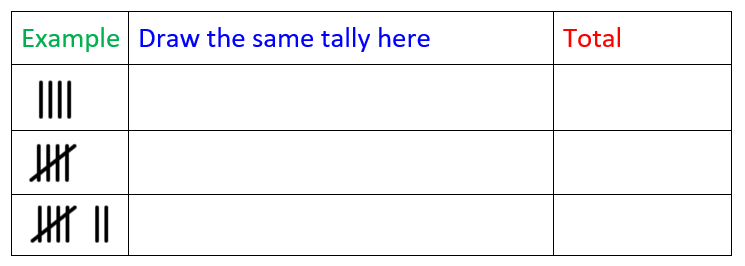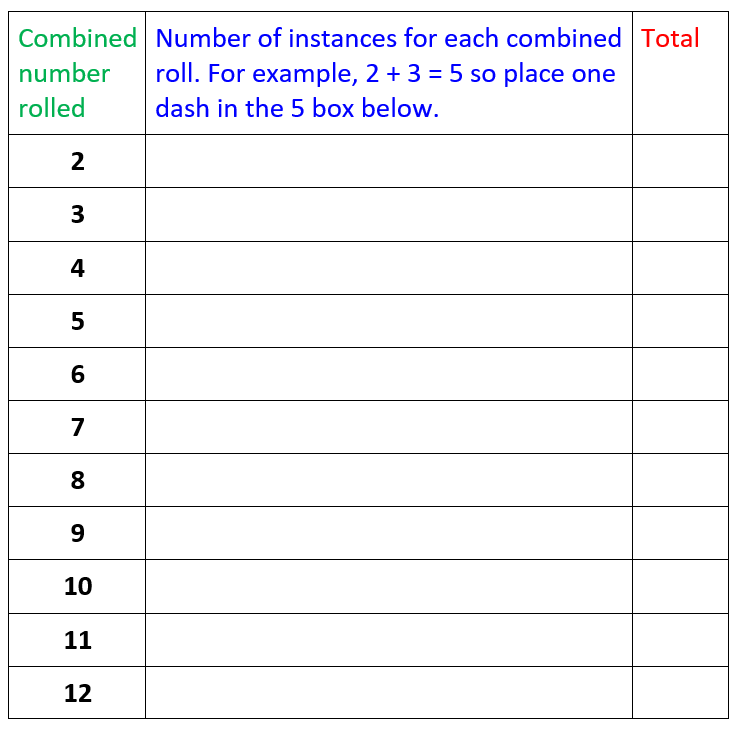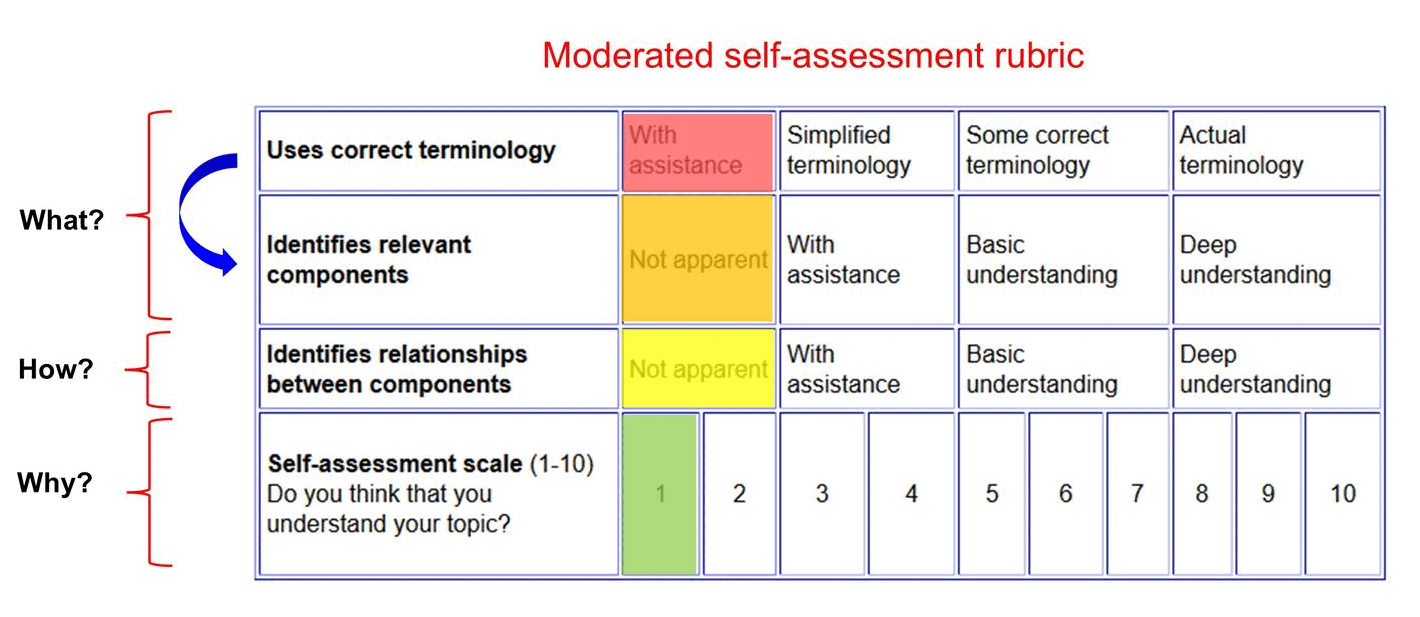SILO F.1 (DRAFT)Foundation, Term 1: InvestigationsFocus: Observations Scope and sequence: Data, Observations, Tables, Tallies |
|
Learning
intention: Students
share observations and answer questions about data which
they have collected.
|
|
|
NSW Syllabus
|
Australian Curriculum (version
9.0)
|
|
"A student observes, questions and
collects data to communicate ideas." (STe-1WS-S)
|
"Students learn to engage in
investigations safely and make observations using their senses."
(AC9SFI02)
|
Introduction to investigations
Making a tally
Tallies can also be very useful for keeping score in sporting matches as the score can be changed by adding to the tally without having to rewrite it.
Introduction to the word 'data'
Introduction to tables
Tables are a logical way to present data.
- Each students receives a six-sided dice.
- Students will roll their dice and place a tick in the corresponding box below each time they roll.
- Students can create these tables on a page of their science workbook/journal, piece of paper (preferably grid paper), or you can print out an A4 sized PDF available here.
- Start with some practice by copying these three tallies and then write the total as a number. (This practice exercise in on the PDF or you can model this for the class if they are drawing their own tables. The focus is on when and why to use the non-vertical line to delineate groups of five.)


 |
Did any number occur more than another? |

 |
Did any number occur more than another?This could also be phrased as, "Are there any patterns in the data?" |
 |
Why was seven the most common number?(Hover over the question icon to reveal the answer.) |
Extension activity: In addition to rolling actual dice, there is an activity in SILO 3.4 'Coding' titled Making dice where students use micro:bits to generate numbers. This is a good introduction to block-based coding because students can quickly see that they can choose how the micro:bits generate the numbers by pressing Button A, Button B, or shaking the micro:bit as if they were shaking actual dice in their hand.
Moderated self-assessment
Discussions with students around the key components of conceptual topics and how they fit together can generate insights into student achievement.


This work is licensed under a Creative
Commons Attribution-NonCommercial-ShareAlike 4.0 International
License.
Main menu